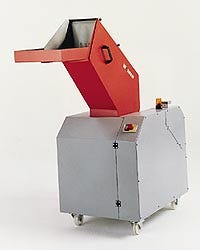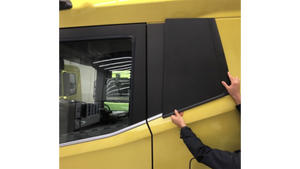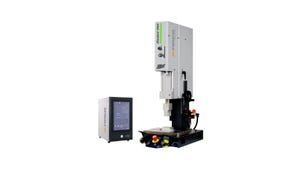May 23, 2001
|
Whatever size granulator you think you need, it's a good idea to buy one size larger for good measure. |
Virtually every molding operation has to figure out what to do with its scrap. There may be only a little or there may be a lot; it may be generated in a constant stream or periodically; it may be small or large pieces; it may be all the same material or dozens of different kinds. You may want to reuse the scrap or send it off to a reclaimer. Before you shop for a granulator, you should think about the answers to these questions and the many more that follow.
Define Your Scrap
Resin type. What resin do you want to reclaim? Is the resin soft enough to absorb energy? If so, you'll need high rotor speed, and the process may generate angel hair. If it's hard and rigid, grinding will generate fines. Filled materials will generate dust and shatter easily. (See chart below.) How many different types will you have? Are they compatible enough to share a granulator?
Which kind of knife will be best suited to the resin? Filled resins require harder steels with better wear characteristics, which also makes those knives more prone to chipping. Knives for softer materials, hardened to a lesser level and thus less expensive, tend to dull more quickly. A midrange tool steel, like D-2, a high-carbon and high-chrome steel, is prone to some chipping, but does not lose its edge as quickly. This is the standard knife material offered by most manufacturers.
Matching the application |
|
Scrap size, shape, and condition. What form is your scrap in? Is it in a thick or thin section? How big are the parts? Are the runners and reject parts of compatible shape and thickness? What temperature will your parts be when you regrind them? Warm parts direct from the press granulate more easily (unless they are so warm they gum up the screen), and can mean that a lower torque motor is required. Is your scrap clean, or is there the risk of tramp metal, leftover inserts, or other contaminants? Is it segregated, or do you have to deal with mixed scrap, such as in overmolded parts?
Quantity. Do you know how much material you will have on a daily basis? Is there a desired feedrate established for the incoming material? Have you determined a throughput rate for the output? Does either the feedrate or the throughput need to match an existing process? For example, will you require regular feeding of runners from a machine on a constant basis? Or will there be a batch of scrap parts on an infrequent or irregular timetable? These factors affect overall size/capacity, location, and the type of evacuation system.
Operational Considerations
Input methods. You can feed a granulator by hand, or by a conveyor, robot, gravity chute, feed roll, or auger feeder. Knowing how these options might fit will help your supplier determine hopper style, height, rotor type, and feed mechanisms. Batch feeding can improve granulate quality because material is ground under pressure from the head of material in the cutting chamber. By having this head of material in the chamber, noise is dampened because scrap doesn't bounce around as freely. How close does the granulator need to be to the source of the scrap? Or the final destination?
|
|
Output. What happens to the granulator's output? Does it go back into your own process? If so, is it proportioned with virgin or used as 100 percent regrind? This will affect how uniform the scrap needs to be and what particle size is required. Will the regrind go into storage or directly back to a feed hopper?
Location. Granulators can make a lot of noise, particularly if the material is hard. Do you want that noise beside your press, especially if there's an operator? Today's granulators are well sound-proofed, but noise and employee comfort are factors. A central granulator is usually off in its own area, but generally has to serve a variety of purposes, and may require more than average cleanout and maintenance. There's an "out-of-sight, out-of-mind" element that might lead to neglect. Are your process utilities in the basement, so that a conveying system for the scrap is important?
Material properties in granulation | |||||||
|
Diversity vs. specificity. Whatever size, shape, rotor configuration, knife type, and feed/discharge options you come up with, suppliers recommend that you seriously consider buying a granulator one size larger than the one that will get you by. Trying to save money by specifying the exact size can mean feeding problems and hangups that require extra human intervention. Having to feed parts in the hopper in a certain orientation will drive your operators crazy and consume time and attention.
With our thanks . . .
. . . to granulator suppliers Comet Automation, Conair, and Sterling/Ball & Jewell for their input to this article.
Go to the IMM Almanac Online home page.
You May Also Like



